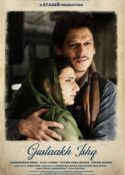 Subhash K Jha remembers noted composer Madan Mohan on his birth anniversary in this special feature shining the light on his career.
Subhash K Jha remembers noted composer Madan Mohan on his birth anniversary in this special feature shining the light on his career.
It’s a myth that Madan Mohan could only compose ghazals. His love songs, bhajans and patriotic numbers have also withstood the test of time. And how! Madan Mohan is no longer looked upon as just one of many gifted composers who entered the film industry in the 1950s. His position is special, and it grows more special with every passing year.
The songs that he composed for Mr Talat Mahmood (’Phir wohi sham’). Mohammed Rafi (’Tum jo mil gaye ho’), Manna Dey (’Kaun aaya mere man ke dware’) and Asha Bhosle (’Jhumka gira re’) were all extraordinarily special.
Madan Mohan could compose songs by intuition. Tunes for the immortal Lata Mangeshkar numbers, ‘Aapki nazron ne samjha’ and ‘Lag ja gale’ came almost in a flourish. And before we knew it, another Madan Mohan melody was born.
So special were Madan Mohan’s compositions that singers tripped over one another to sing them. But his favourite was Lata Mangeshkar. “Perhaps he felt I could give his compositions what they required,” she told me in her guarded, won’t-cause-hurt-to-anyone tone that she adopts whenever her undisputed supremacy is discussed. It was more than just faith in her vocals. Madan Mohan selected Ms Mangeshkar to be his main voice because he knew only she could touch those heights of sublimity that his tunes strove to achieve through the seven musical notes.
If you hear Madan Mohan sing ‘Mai ri main kaase kahun peer’ in Dastak in his own voice (his version was recorded prior to Ms Mangeshkar’s since she didn’t have the dates for the original recording), and then hear her take up the tune in her voice we know what the singer achieved in Madan Mohan’s compositions. Lataji simply took hold of the composer’s notes and whisked them away into wonderland. Lata Mangeshkar-Madan Mohan’s ‘Meri aankhon se koi’, ‘Woh chup rahen to’, ‘Zara si aahat’, “Tere bin sawan kaise beeta’ and ‘Duniya bananewale yehi hai meri iltija’ represent the acme of creative excellence.
Lataji and her Madan Bhaiyya’s creative collaboration left the rest of Mumbai’s singing fraternity fuming with frustration. Manna Dey was once quoted as saying that Madan Mohan was a very fine composer who never seemed to care for any other voice but that of Ms Mangeshkar. Asha Bhosle never got over her resentment. There was an incident when she walked up to the composer to ask why she wasn’t being given an opportunity to sing his songs. “Nahin.” the dapper ditty-maker replied. “Jab tak Lata hai. tab tak aur koi nahin.”
There is so much more to the Madan Mohan-Lata Mangeshkar combination than meets the eye. The sheer grit and glory of their collaboration defies common explanation. I am told there are scores of songs that he composed for her voice, which were either never recorded or never released. For Woh Kaun Thi heard only a fraction of the recorded music. But what a fabulous fraction!
Lataji once told me how terrible she felt on her Madan Bhaiyya’s behalf when he lost the Filmfare Award for Woh Kaun Thi by a slender margin.
“You felt this way, and that’s enough of a reward for me.” Madan Mohan told his melodious muse quietly.
Isn’t it ironical to think that this man of melodious dimensions never got round to winning an award until 1971, when he won the National Award for Dastak?
Never in his 25-year long career did Madan Mohan compose a superfluous number. Every score, song, note and instrumentation had to be flawless. In a costume drama like Jahan Ara, we get gem after sparkling gem designed to create a mood of melodious infinity.
So impressed was Lataji’s gifted composer-brother. Mr Hridaynath Mangeshkar, by Madan Mohan’s compositions in Jahan Ara that he made the composer sign a copy of the film’s album. Ironically, Madan Mohan’s greatness was recognised posthumously. No sooner did he pass away on July 14, 1975, than his songs in H. S Rawall’s Laila Majnu began to hit the high spot in the charts. Husn hazir hai remained at the top of the Cibaca Geet Mala for more than 25 weeks. Madan Mohan wasn’t around to witness his belated success. If he was he would have smiled at the ways of destiny.








